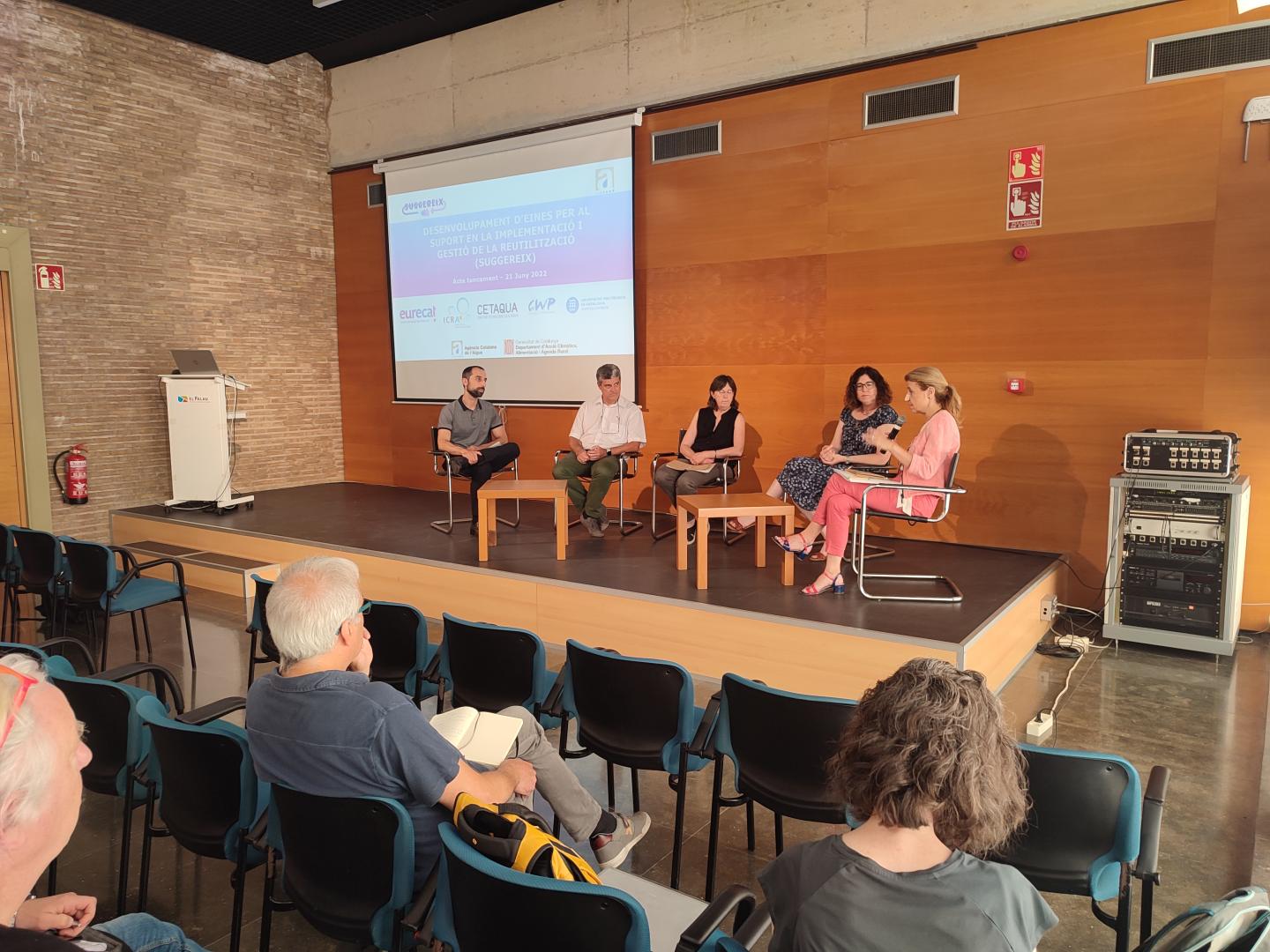The SUGGEREIX project, which aims to promote the use of reclaimed water, is completed

- SUGGEREIX has integrated information on regulations, treatment and monitoring systems, quality indicators and protective values prioritising safety in reuse.
- The main outcome is a Decision Support System (DSS) to help managers of reuse schemes to operate them in an optimal, safe and compliant way.
- The results of SUGGEREIX will facilitate the implementation of new reuse schemes that reduce pressure on water resources in the current context of climate change.
The implementation period of the SUGGEREIX project came to an end in June 2022. The aim of this initiative has been to facilitate the replication and implementation of new water reuse schemes, as well as to provide the management bodies of current schemes with tools to operate them in an optimal way with a special focus on safety, taking into account the characteristics of the water to be treated and the different uses that are contemplated.
SUGGEREIX has been financed by the R&D line of the Catalan Water Agency (ACA), with a budget of over 321,000 euros and funding of over 234,000 euros. It was led by the EURECAT technology centre, with the participation of the Catalan Water Partnership, the water technology company Cetaqua, the Catalan Water Research Institute (ICRA) and the Universitat Politècnica de Catalunya (UPC).
The project idea is developed in a context in which there is a growing need to ensure the availability of water resources in the context of climate change. In many cases, these resources are also under excessive pressure due to demographic growth and increased demand for water. Currently, water reuse initiatives not linked to direct consumption can respond to this situation by being applied for industrial, environmental, agricultural or urban uses.
Ensuring the safe replication of current initiatives for different uses and implementing new schemes is difficult, as some compounds present in effluents either do not have values regulated in the regulations for the different uses, or the available information focuses on specific groups without considering in detail the wide variety of emerging compounds. On the other hand, in many of the reuse initiatives that are proposed, there is also no unified methodology to assess the benefits of their implementation in relation to costs and needs.
Therefore, the SUGGEREIX project was conceived to respond to these recurring challenges in the field of water reuse. Among the activities of the project, an exhaustive search of successful cases of reuse at international level has been carried out, as well as a comparison of regulations and guidelines on water reuse in different countries. As a result, a database of more than 160 success stories worldwide and a comparative table of 13 international reference standards have been generated, which can be downloaded free of charge from the project website (www.aiguaregenerada.cat).
The survey activities have been developed in parallel with the definition and identification of indicator compounds to detect and quantify chemical and microbiological contamination. On the basis of the indicators, and based on the sectorisation of uses contemplated in the regulations, protective values have been defined and monitoring strategies have been evaluated. The results obtained for the different uses contemplated have also been considered, considering the requirements of the regulations and referenced with the international success stories identified. With the guidelines obtained, the efficiency of different unitary treatment operations has been evaluated to be organised in efficient treatment trains, according to the composition of the starting effluents and the needs depending on the uses.
The Decision Support System and the SUGGEREIX Guide
As the main result of the project, a Decision Support System (DSS) has been developed. This software application integrates detailed and worldwide information on regulations, guidelines and good practices, as well as protective values defined on the basis of end uses, water treatment systems and monitoring strategies. The project's ODS will be a freely accessible tool that will allow the choice of a methodology for identifying parameters to be used as indicators of water quality, monitored and analysed.
The final objective of the ODS is to allow the implementation of a treatment train for each type of effluent, which guarantees optimal values depending on the compounds found in the effluent and the final uses to which the reclaimed water is to be put. The ODS also allows a multi-criteria comparison of treatment trains, taking into account implementation and operation and maintenance costs (CAPEX and OPEX), energy consumption, the space required for their installation and their environmental impact in terms of carbon footprint and water footprint. The functionality of the ODS has been validated in three reuse initiatives that have served as demonstrations. These initiatives were the Baix Llobregat water reclamation station, the Tossa de Mar Water Reclamation Station (ERA) and the water reuse carried out at the Samba hotel in Lloret de Mar.
Work has also been carried out on the drafting of a reference guide in the field of reuse that will condense and present in a summarised form the information and results obtained in the SUGGEREIX project, putting them in the context of the general needs and trends taking place to date. The guide is also intended to be a reference document for managers of reuse schemes, and in addition to the technical conclusions, it will describe the functioning and potential of the ODS. This guide will be distributed among the most relevant actors and stakeholders in the water sector at Spanish, European and international level and will also be available as a web resource on the project website.
Thus, the SUGGEREIX project ends having fulfilled its mission of generating tools and information to help current and future managers of reuse schemes to operate them with maximum efficiency, minimising costs and guaranteeing safety according to the uses and characteristics of the starting effluents.